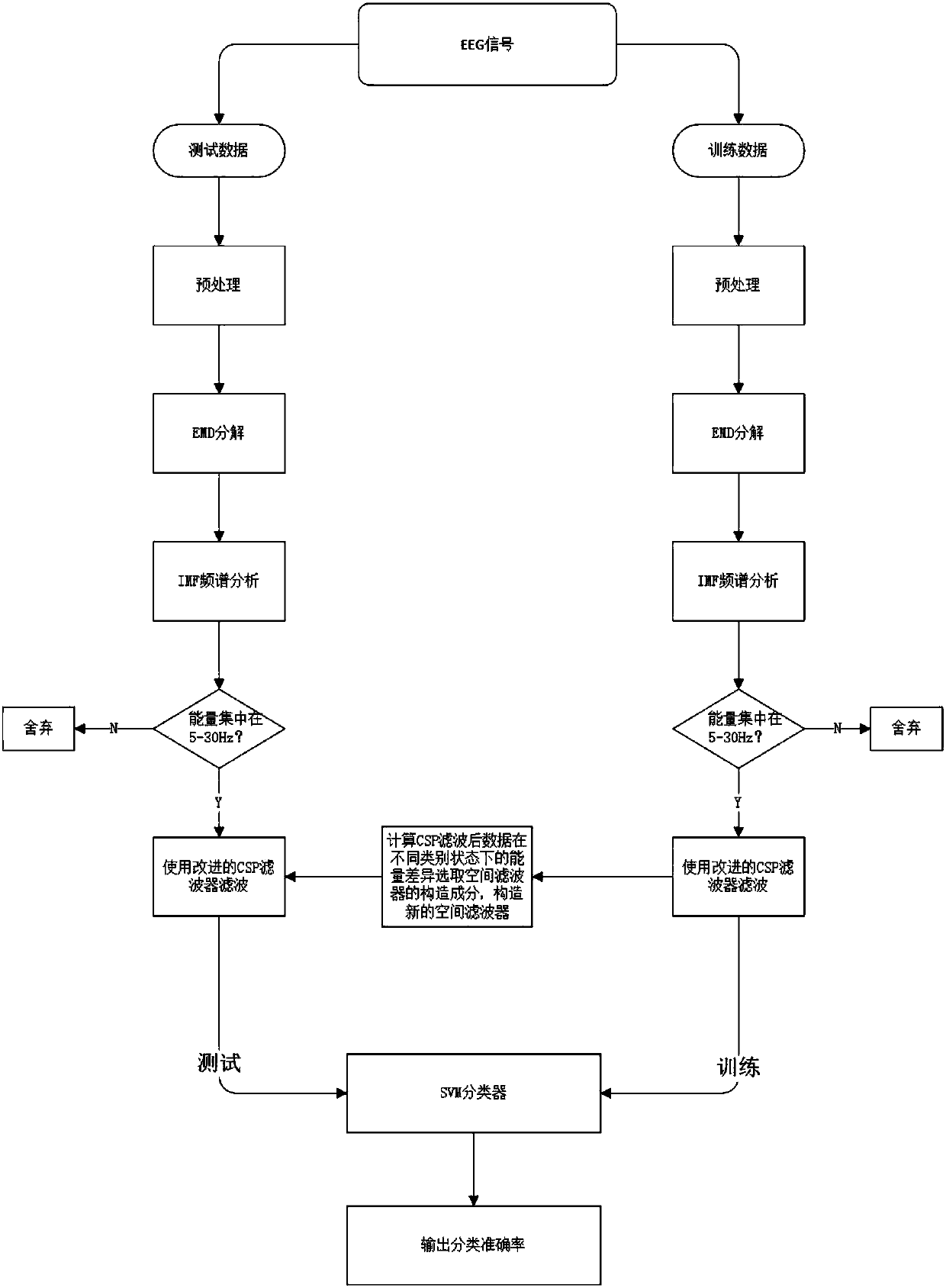Electroencephalogram signal feature extraction method combining with public space mode algorithm and EMD
A technology of spatial patterns and EEG signals, applied in pattern recognition in signals, mechanical pattern conversion, character and pattern recognition, etc., can solve problems such as lack of frequency information, a large number of input channels, etc.
- Summary
- Abstract
- Description
- Claims
- Application Information
AI Technical Summary
Benefits of technology
Problems solved by technology
Method used
Image
Examples
Embodiment Construction
[0064] The present invention will be further described in detail below in conjunction with the accompanying drawings.
[0065] The present invention is mainly based on the following contents: 1. EEG signal processing based on empirical mode decomposition; 2. Frequency domain energy analysis; 3. Screening of intrinsic mode functions according to frequency spectrum analysis, and performing public space mode decomposition to solve CSP multi-input and lack of frequency domain information 4. Support vector machine classification.
[0066] Such as figure 1 Shown, method of the present invention comprises the steps:
[0067] Step 1: Collect the EEG signals of each subject. The signal collection process is as follows: figure 2 shown. Select the EEG signals of 9 subjects as the training set and test set, and preprocess the signals in the two channels of C3 and C4 of a single subject respectively; including baseline correction, ICA to remove artifacts, and 5-30Hz band-pass filtering...
PUM
 Login to View More
Login to View More Abstract
Description
Claims
Application Information
 Login to View More
Login to View More - R&D
- Intellectual Property
- Life Sciences
- Materials
- Tech Scout
- Unparalleled Data Quality
- Higher Quality Content
- 60% Fewer Hallucinations
Browse by: Latest US Patents, China's latest patents, Technical Efficacy Thesaurus, Application Domain, Technology Topic, Popular Technical Reports.
© 2025 PatSnap. All rights reserved.Legal|Privacy policy|Modern Slavery Act Transparency Statement|Sitemap|About US| Contact US: help@patsnap.com



